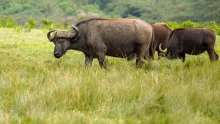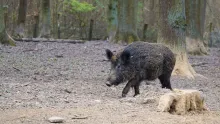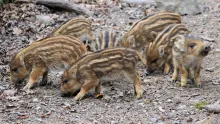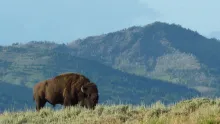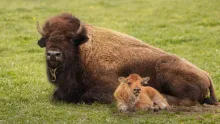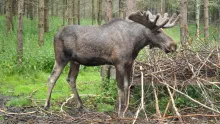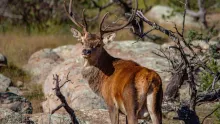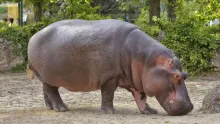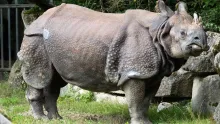Skip to main content
General Information
- The Water Buffalo (Bubalus bubalis) is a large domesticated bovine found in Asia, Africa, and parts of Europe.
- It is one of the most important livestock animals, providing milk, meat, and labor to millions of people.
- There are two main types: the Swamp Buffalo and the River Buffalo, each adapted to different environments.
- Wild populations, known as Wild Water Buffalo (Bubalus arnee), are endangered and primarily foun
Introduction
- The African Cape Buffalo (Syncerus caffer) is one of the most formidable and dangerous animals in Africa.
- They are known for their large, robust bodies, curved horns, and unpredictable behavior.
- Cape Buffalos are part of the Big Five and are highly respected by hunters and wildlife enthusiasts.
Physical Characteristics
- Cape Buffalos have a massive, stocky body, with males weighing between 1,100 to 2,200 pounds (500 to 1,000
General Information
- The Wild Boar (Sus scrofa) is a species of wild pig native to Europe, Asia, and North Africa.
- It is the ancestor of the domestic pig, which was domesticated thousands of years ago.
- Wild boars are known for their tough and aggressive nature.
- They are highly adaptable and can live in forests, grasslands, wetlands, and agricultural areas.
- Wild boars are considered an invasive species in some regions due to their rapid re
General Information
- The Bison is a large, herbivorous mammal native to North America and Europe.
- There are two main species: the American bison (Bison bison) and the European bison (Bison bonasus).
- Bison are often mistakenly called buffalo, but true buffalo are found in Africa and Asia.
- They are known for their massive size, shaggy coats, and curved horns.
- The American bison is the largest land mammal in North A
General Information
- The Moose (Alces alces) is the largest species of deer in the world.
- It is native to North America, Europe, and Asia, thriving in boreal forests.
- Moose are solitary animals and do not form herds like other deer species.
- They are strong swimmers and often inhabit areas near lakes, rivers, and wetlands.
- Moose are herbivores, feeding on leaves, twigs, bark, and aquatic plants.
Physical Chara
General Information
- The Mule Deer (Odocoileus hemionus) is a species of deer native to North America.
- It is named for its large ears, which resemble those of a mule.
- Mule deer are found in western North America, including the U.S., Canada, and Mexico.
- They are herbivores, primarily feeding on leaves, shrubs, and grasses.
- Mule deer are well known for their unique bounding gait, called "stotting," where they leap with all
General Information
- The Red Deer (Cervus elaphus) is one of the largest deer species in the world.
- It is native to Europe, North Africa, and parts of Asia but has been introduced to other regions.
- Red deer are known for their majestic antlers, which are found only in males.
- They are herbivores, primarily feeding on grass, leaves, and shrubs.
- Red deer play an important role in forest ecosystems by helping with seed dispersal and vegetatio
General Information
- The Hippopotamus (Hippopotamus amphibius) is a large, semi-aquatic mammal native to Africa.
- It is the third-largest land mammal after the elephant and rhinoceros.
- Hippos are known for their aggressive nature and are considered one of the most dangerous animals in Africa.
- They are herbivores, feeding mainly on grass.
- Hippos are primarily found in rivers, lakes, and swamps of sub-Saharan Africa.
Introduction
- The Indian Rhinoceros (Rhinoceros unicornis), also known as the Greater One-Horned Rhinoceros, is one of the largest rhino species.
- They are known for their single horn and armor-like skin folds, which give them a prehistoric appearance.
- Indian Rhinos are native to the Indian subcontinent and are primarily found in protected areas.
Physical Characteristics
- Indian Rhinos have a massive, robust body,
General Information
- The White Rhinoceros (Ceratotherium simum) is the largest species of rhinoceros.
- It is native to Africa, primarily found in South Africa, Namibia, Zimbabwe, and Kenya.
- White rhinos are divided into two subspecies: the Southern White Rhino and the Northern White Rhino.
- The Northern White Rhino is functionally extinct, with only two known individuals remaining.
- The species is classified
